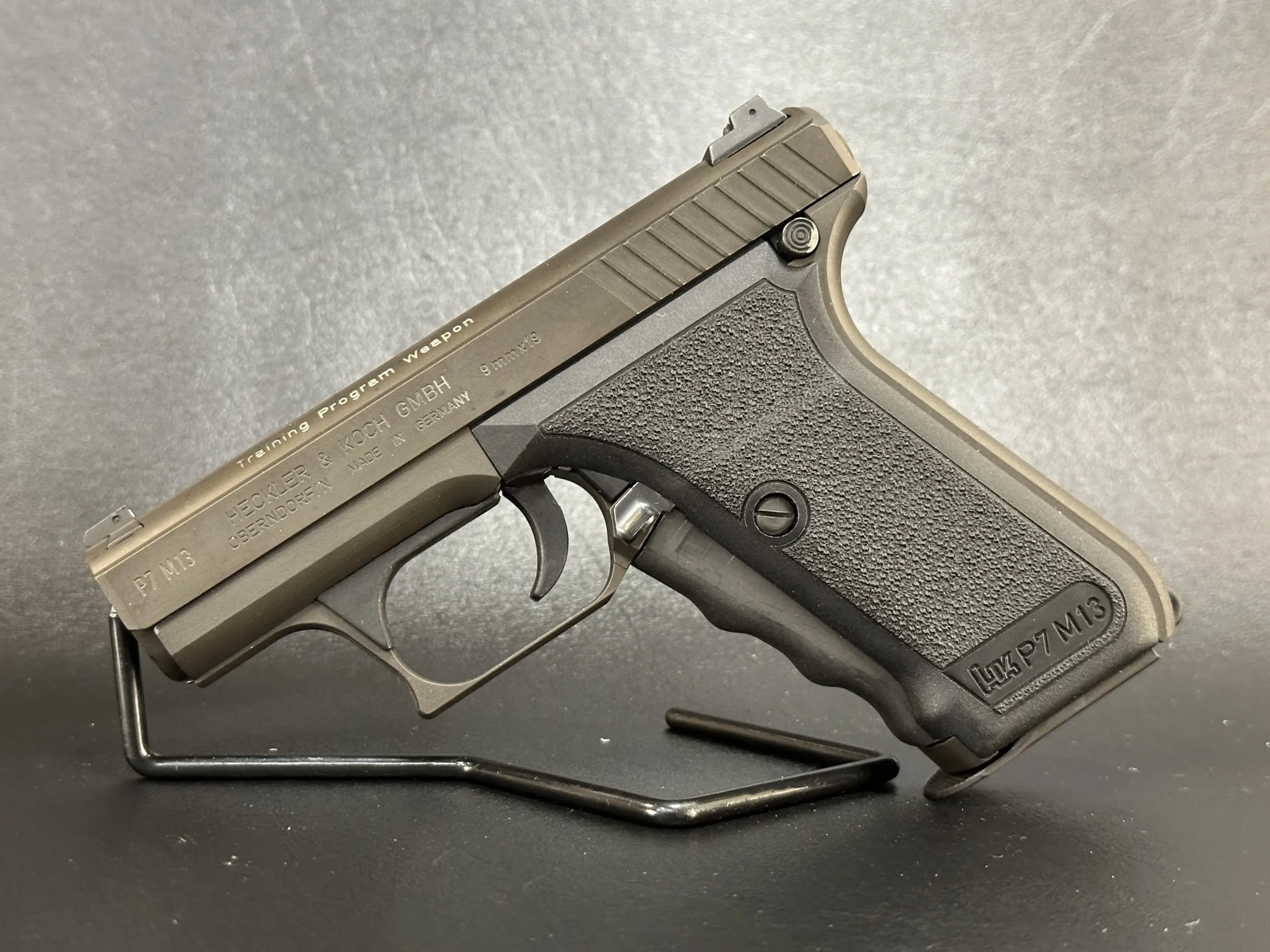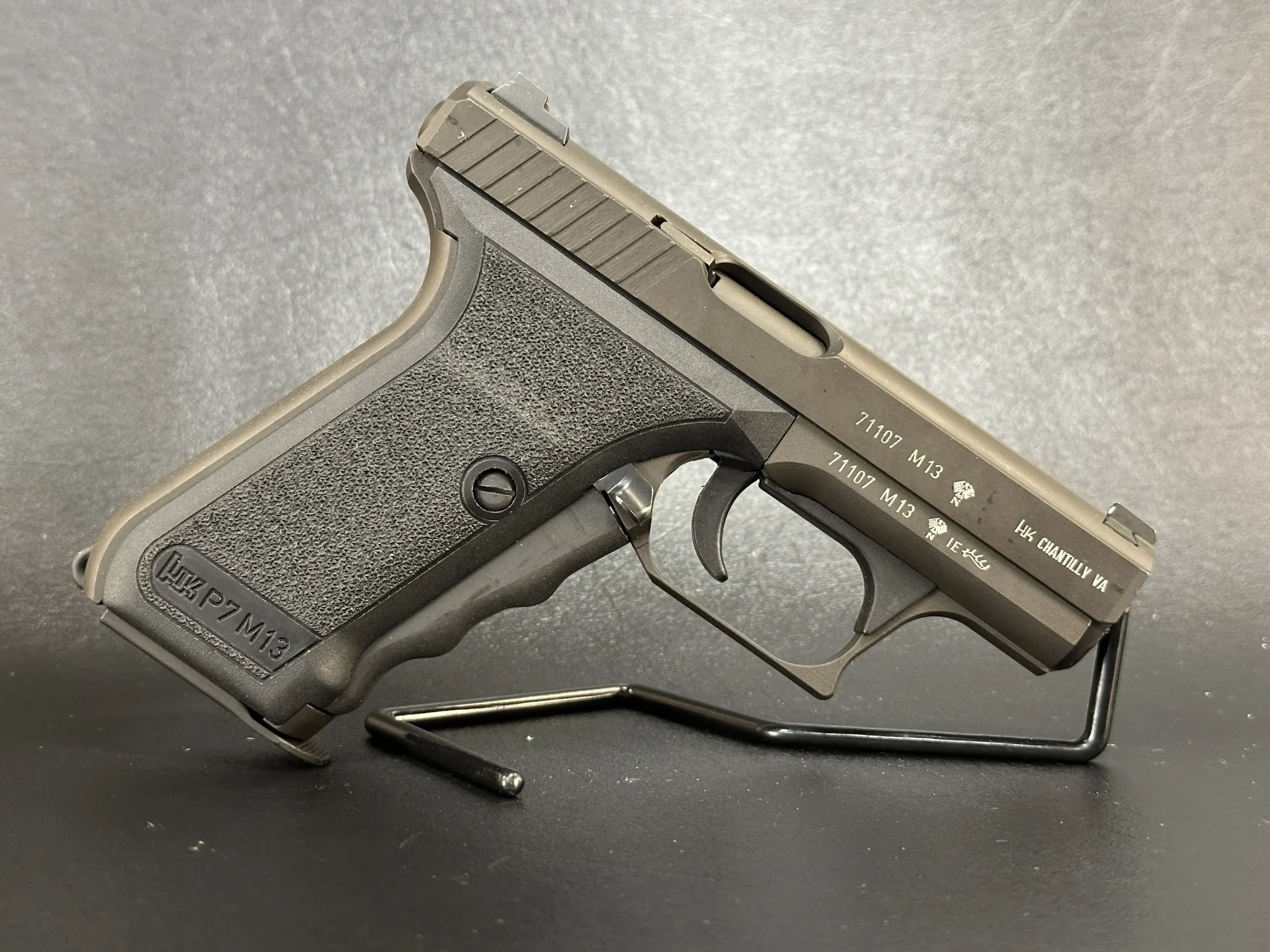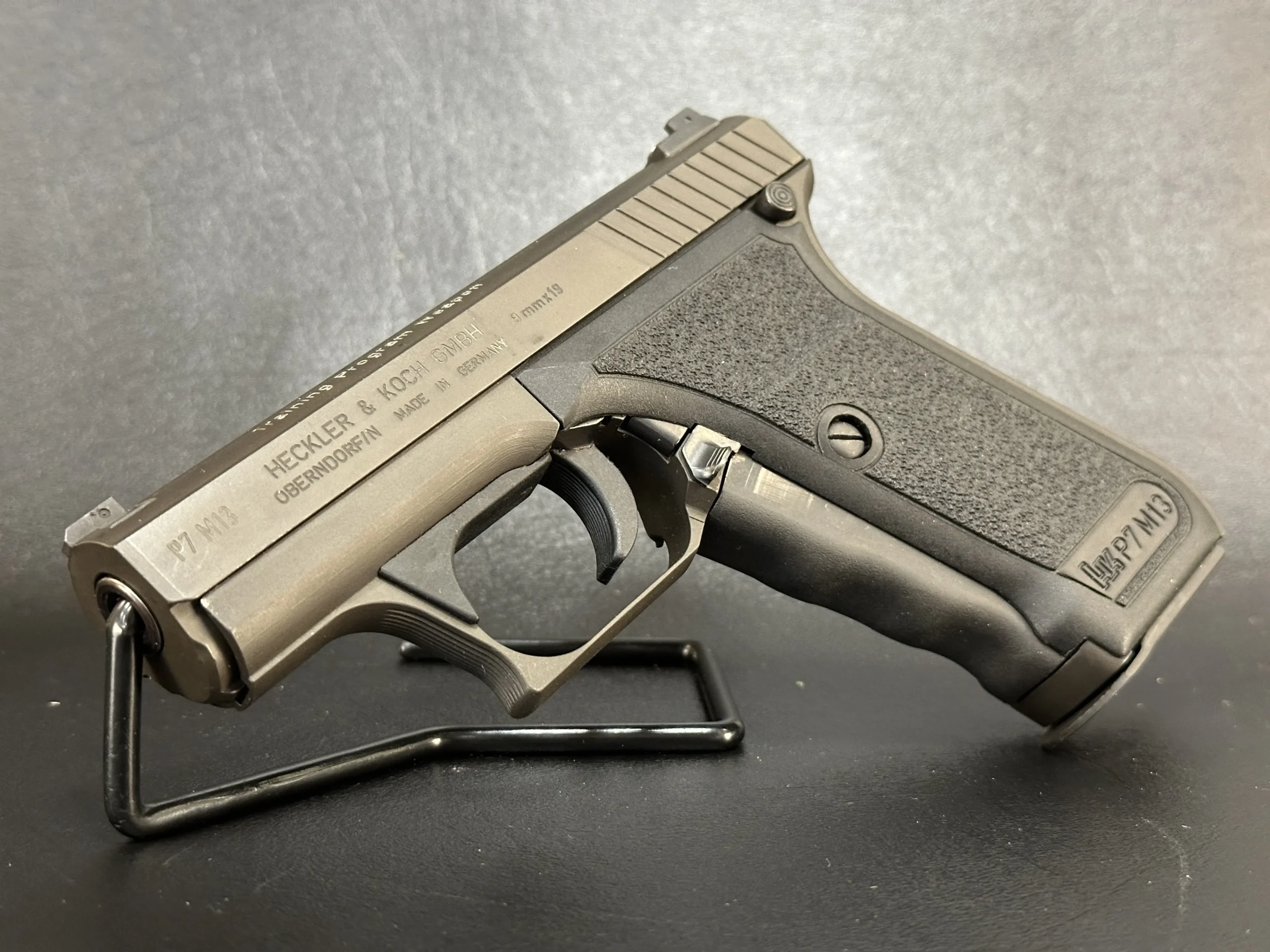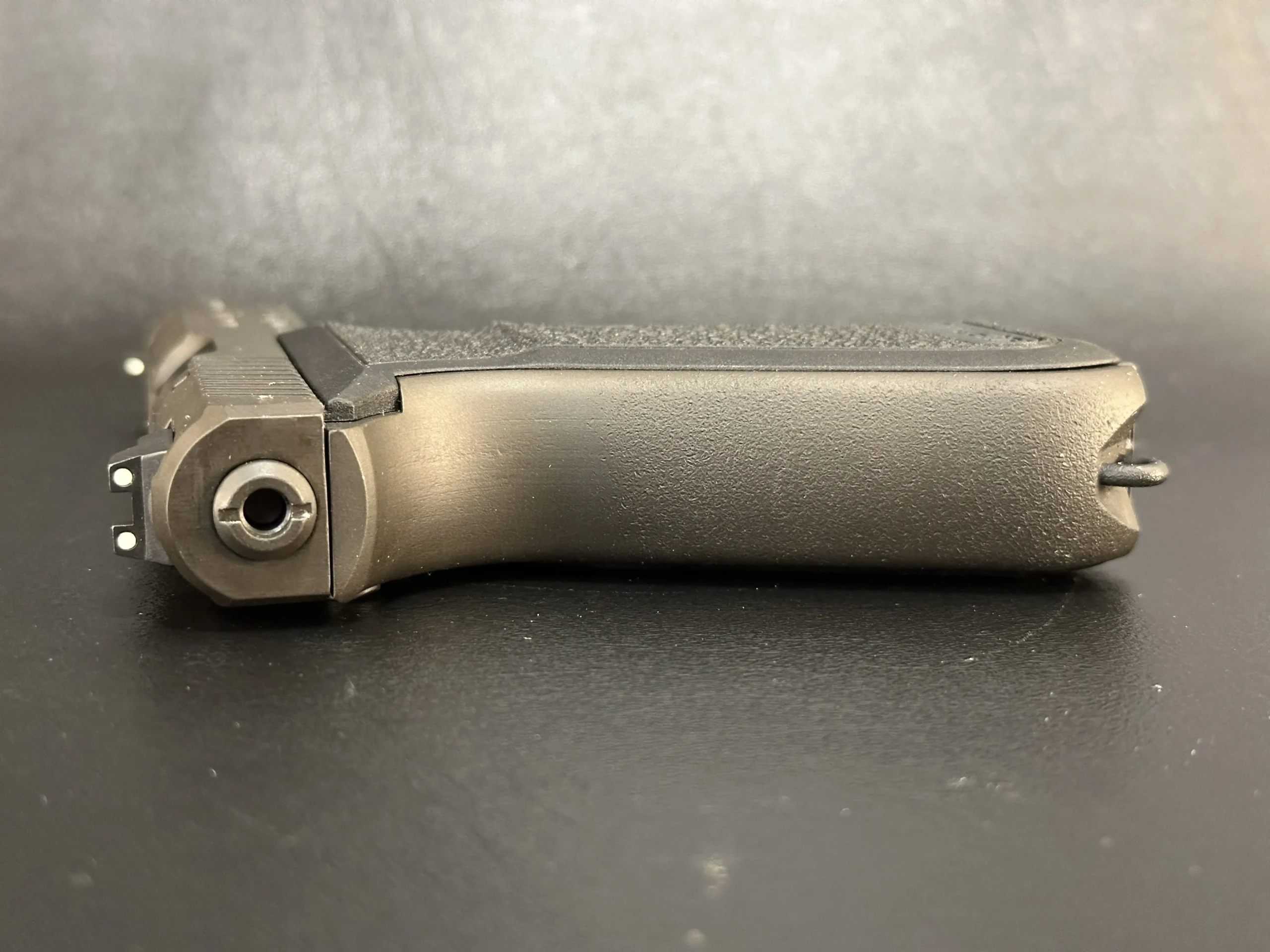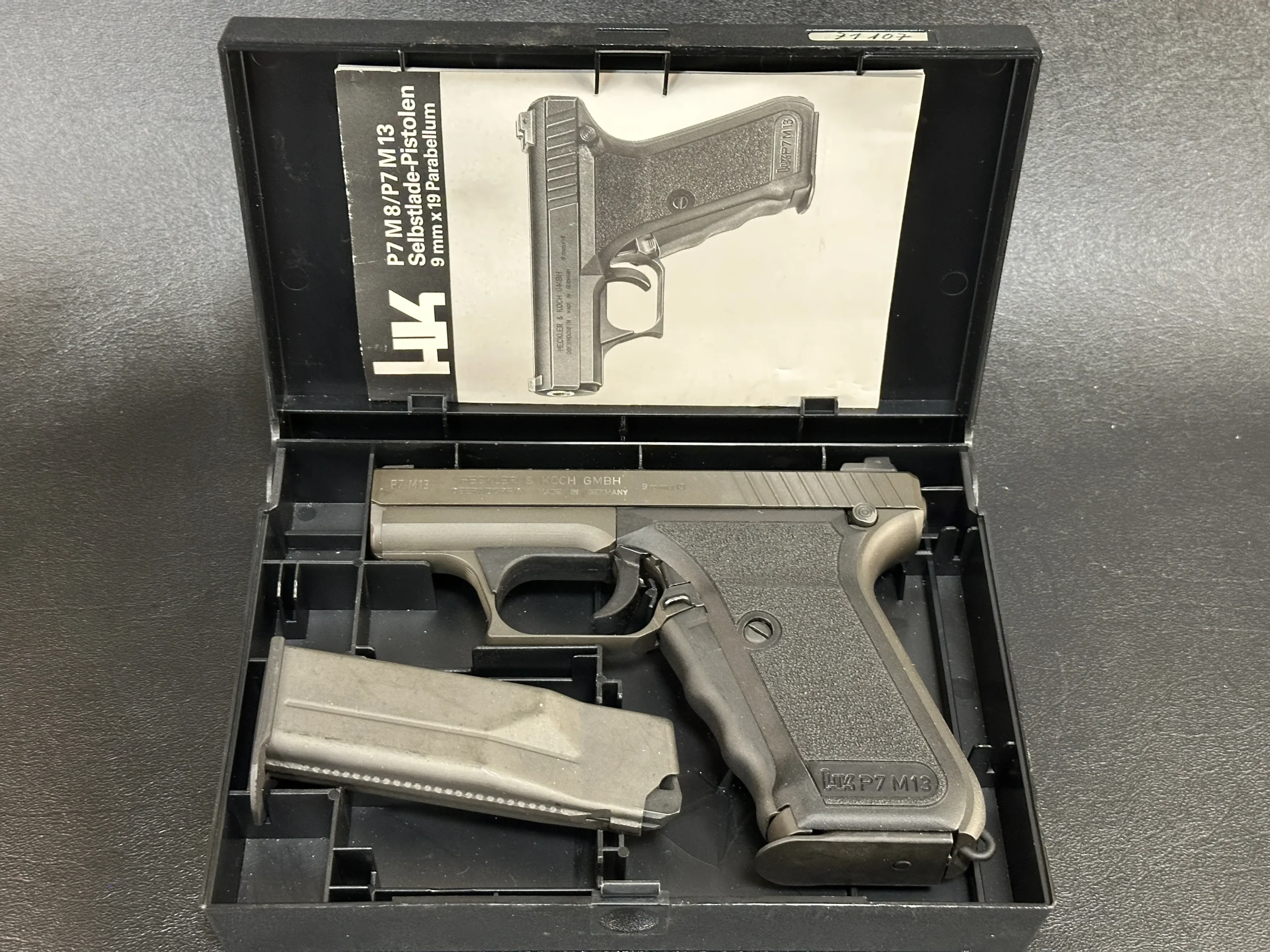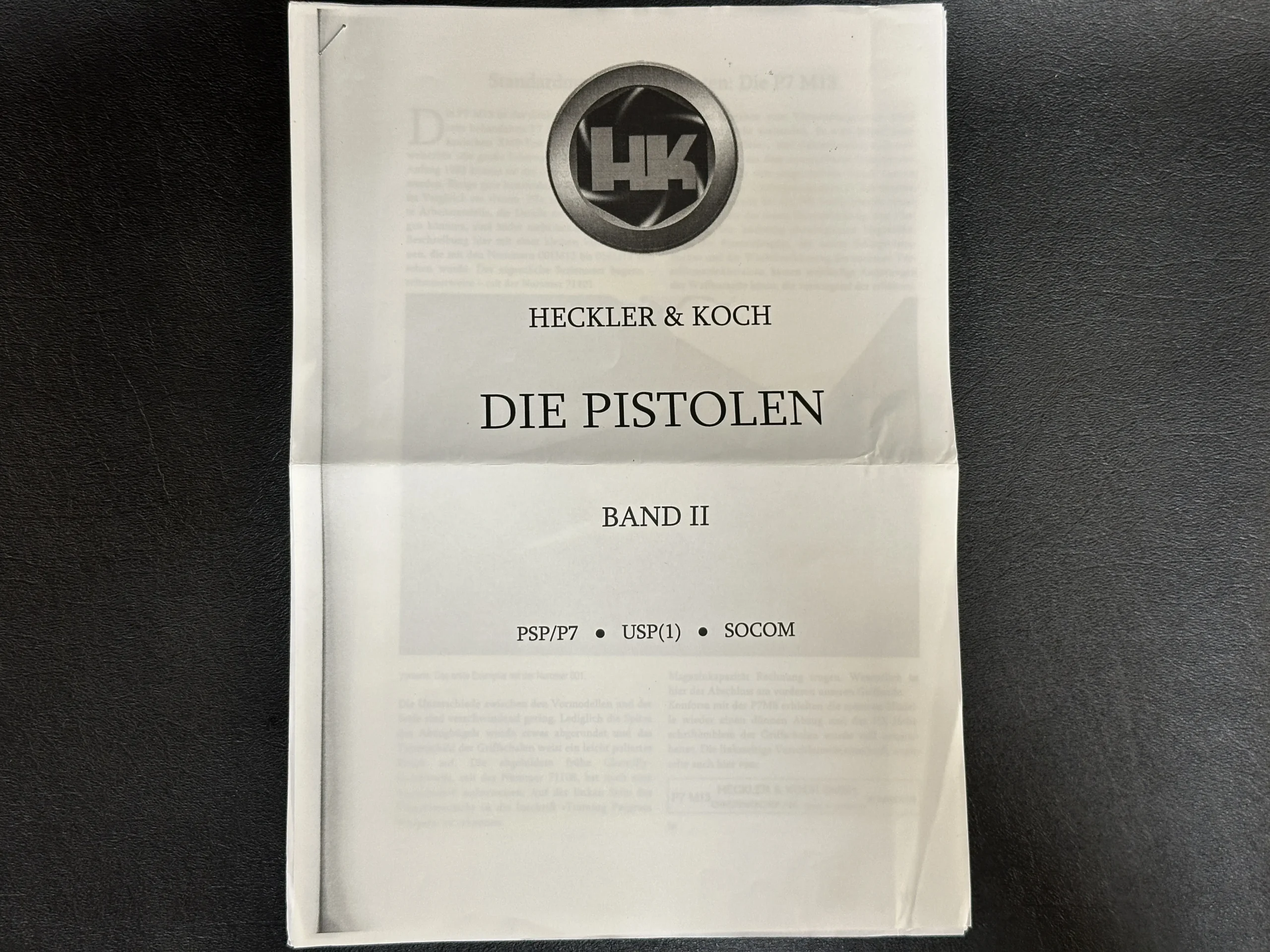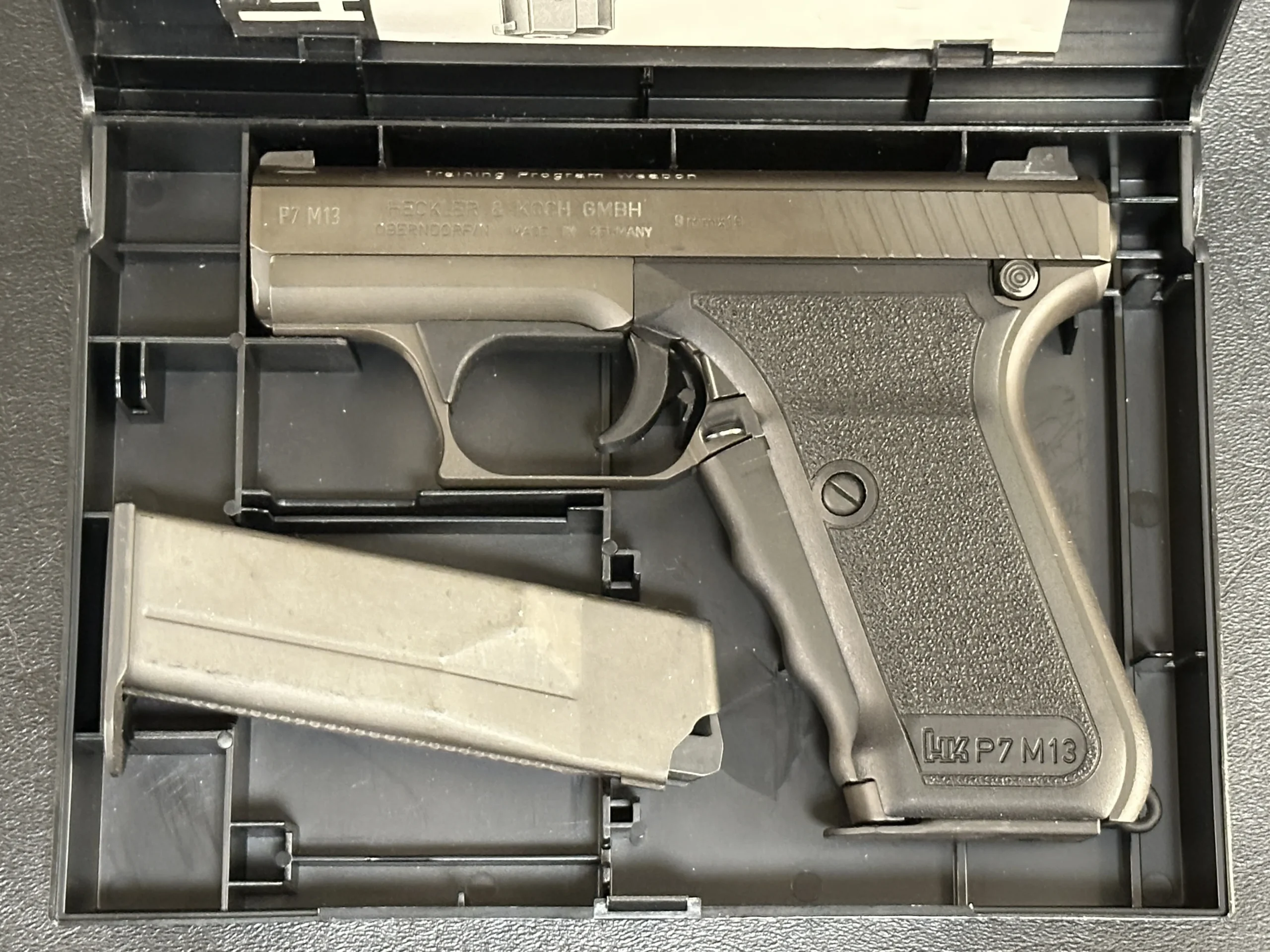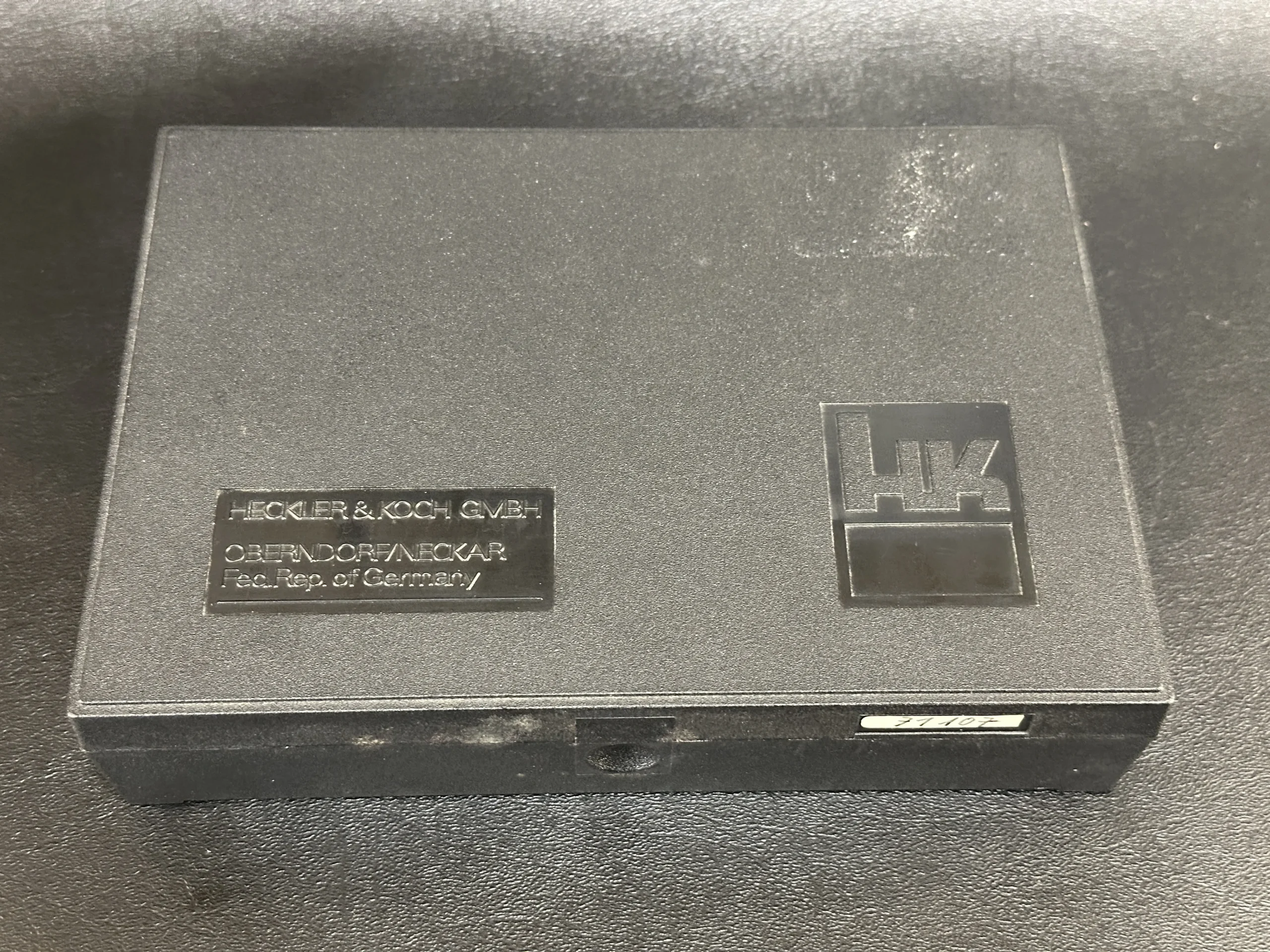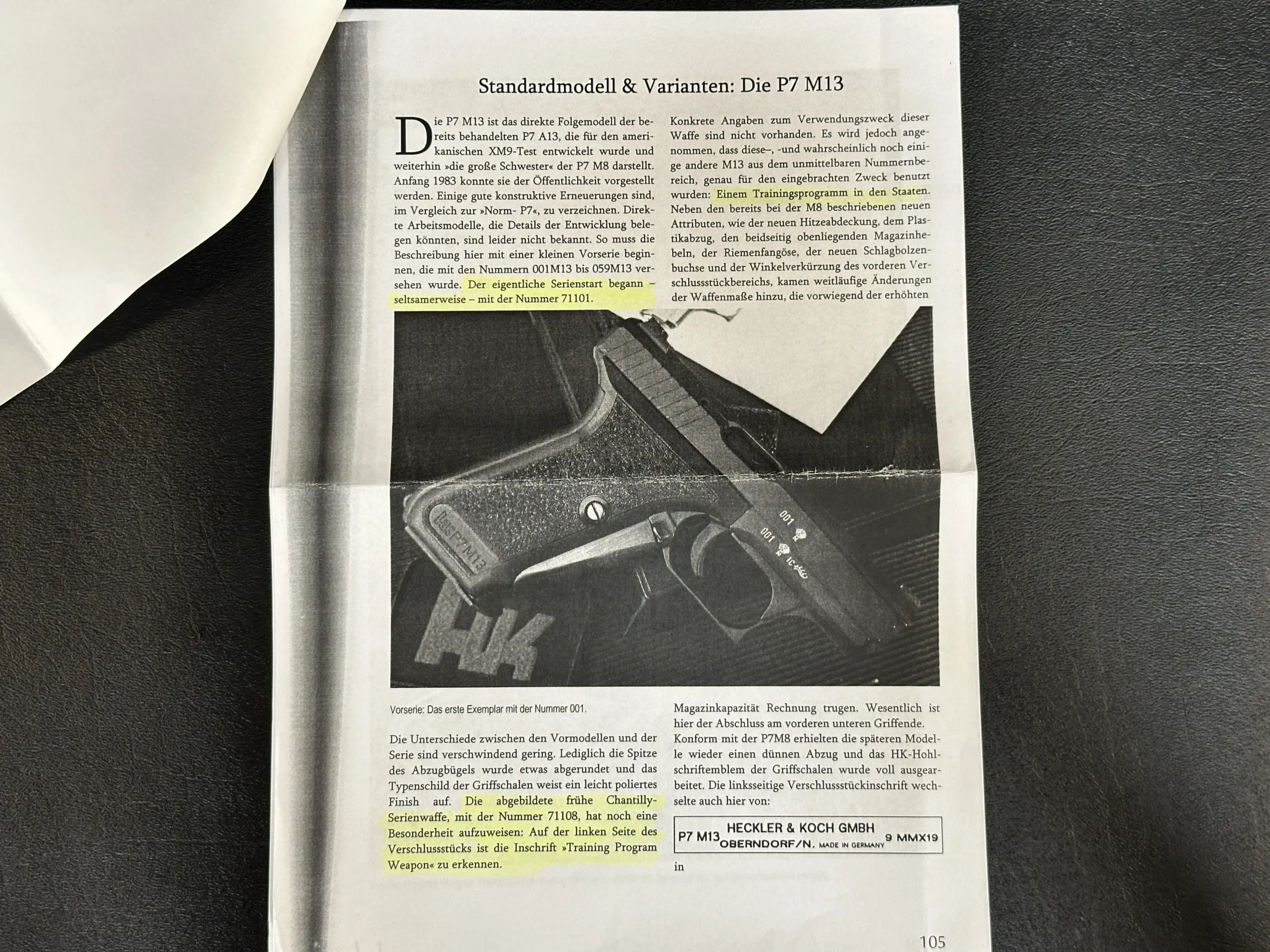Description
You don’t just own an HK P7 M13—you appreciate it. Built with German precision and a rare kind of mechanical genius, this pistol isn’t just admired for its appearance or even its shooting capabilities (though both are top-notch). It’s remembered for how it works. The gas-delayed blowback system? Pure engineering magic. It tamps down recoil and keeps your shots flatter than most shooters expect from a compact 9mm, especially one that dates back to the 1980s.
This particular example isn’t just a great shooter; it’s a piece of history. That squeeze-cocking mechanism, love it or hate it, makes this gun unmistakably P7. And the 13-round double-stack mag? That was ahead of its time. You get solid capacity without sacrificing comfort or control, which is no small feat in a pistol this size.
It comes as it should: with the original case and paperwork. That’s not just a nice touch for collectors—it’s a sign the gun’s been cared for and kept right. These extras give it more than just resale value—they tell its story.
Whether you’re chasing down a crown jewel for your collection or want a serious, well-made pistol with character and performance, the P7 M13 hits the mark. It’s rare. It’s clever. And above all, it still holds its own, even in a world full of modern polymer wonders.
The History of the HK P7 M13
The P7M13 wasn’t just an update—it was a strategic evolution. Introduced in 1983 as the follow-up to the rare P7A13, this model brought several clever refinements that made a real difference in the field. It kicked off with a limited pre-series (serials 001M13 to 059M13), before transitioning into full production starting at serial 71101.
But here’s where things get interesting: the M13 wasn’t just about tweaking parts—it was rethought to accommodate a larger double-stack magazine. That meant reshaping critical areas of the frame, adjusting the locking piece geometry, and even modifying the impact pin bushing. Additions like the ambidextrous mag release, heat shield, plastic gas exhaust tube, and a revised belt loop eyelet helped bring the P7 into a more modern, tactical era.
A small but meaningful detail? The return to a narrower trigger, much like what you’d find on the P7M8. It’s the kind of touch you only appreciate after spending time behind the trigger.
And this wasn’t just a European phenomenon. U.S. special operations units took notice. In fact, by 1989, even the Navajo Nation’s elite Special Operations Unit—just 50 officers covering a massive 650,000-hectare stretch across Arizona, Utah, and New Mexico—had switched to the P7M13. That unit was made up entirely of Navajo officers and operated with complete autonomy, making the M13 a trusted tool in a uniquely demanding environment.
Bottom line? The HK P7M13 features a blended compact design, higher capacity, and unmatched reliability, all in a package that has earned respect far beyond its homeland.


